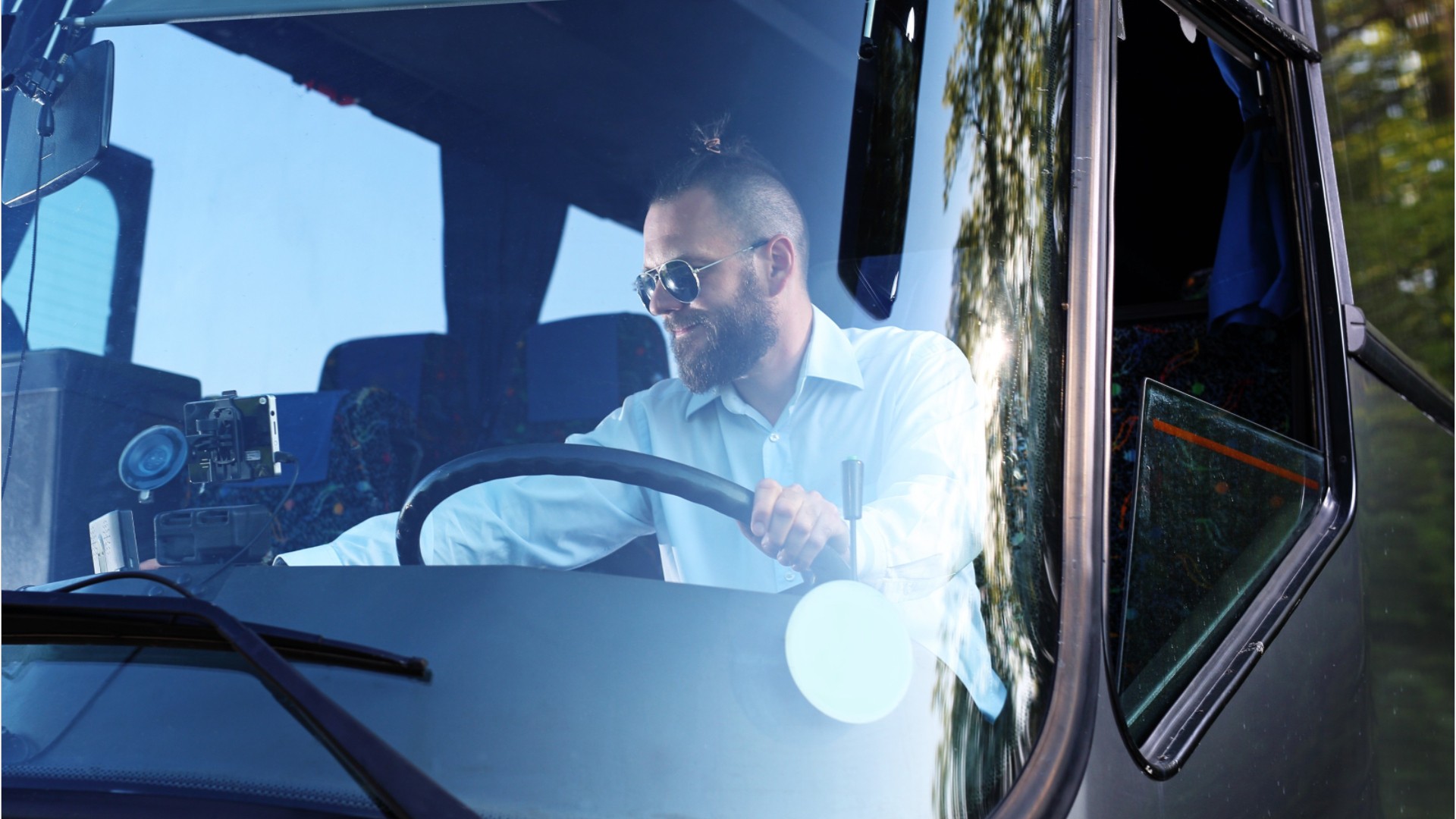Bus Drivers, Transit & Intercity
Bus Driver, Bus Operator, Motor Coach Operator, Transit Bus Driver
 Select a military branch to see samples.
Select a military branch to see samples.
Air Transportation; Air Transportation Apprentice; Air Transportation Craftsman; Air Transportation Helper; Air Transportation Superintendent; Ground Transportation; Ground Transportation Apprentice; Ground Transportation Helper; Ground Transportation Journeyman; Ground Transportation Manager
Bridge Crewmember; Cannon Crewmember; Motor Transport Operator; Multiple Launch Rocket System (MLRS)/High Mobility Artillery Rocket System (HIMARS) Crewmember; Unit Supply Specialist
No similar titles were found.
Amphibious Combat Vehicle (ACV) Crewmember; Assault Amphibious Vehicle (AAV) Crewmember; Motor Vehicle Operator
No similar titles were found.
Ground Transportation; Ground Transportation Journeyman
What they do:
Drive bus or motor coach, including regular route operations, charters, and private carriage. May assist passengers with baggage. May collect fares or tickets.
On the job, you would:
- Drive vehicles over specified routes or to specified destinations according to time schedules, complying with traffic regulations to ensure that passengers have a smooth and safe ride.
- Park vehicles at loading areas so that passengers can board.
- Inspect vehicles and check gas, oil, and water levels prior to departure.
Knowledge
Transportation
- movement of people or goods by air, rail, sea, or road
Business
- customer service
Safety and Government
- public safety and security
- law and government
Arts and Humanities
- English language
Skills
Basic Skills
- listening to others, not interrupting, and asking good questions
- thinking about the pros and cons of different ways to solve a problem
Social
- looking for ways to help people
- understanding people's reactions
Abilities
Controlled Movement
- quickly change the controls of a machine, car, truck or boat
- use your arms and/or legs together while sitting, standing, or lying down
Vision
- see details that are far away
- decide which thing is closer or farther away from you or decide how far away it is from you
Attention
- pay attention to something without being distracted
- do two or more things at the same time
Spatial
- know where things are around you
Personality
People interested in this work like activities that include practical, hands-on problems and solutions.
They do well at jobs that need:
- Self-Control
- Cooperation
- Cautiousness
- Dependability
- Attention to Detail
- Stress Tolerance
Technology
You might use software like this on the job:
Operating system software
- Microsoft Windows
Map creation software
- AOL MapQuest
- Microsoft MapPoint
Internet browser software
- Web browser software
Education
Education: (rated 2 of 5)
high school diploma/GED or
no high school diploma/GED
usually needed
no high school diploma/GED
usually needed
Job Outlook
Average
New job opportunities are likely in the future.
Explore More
- Bus Drivers, School
- School Bus Monitors
- Shuttle Drivers & Chauffeurs
- Subway & Streetcar Operators
- Taxi Drivers
You might like a career in one of these industries:
See more details at O*NET OnLine about Bus Drivers, Transit & Intercity.





